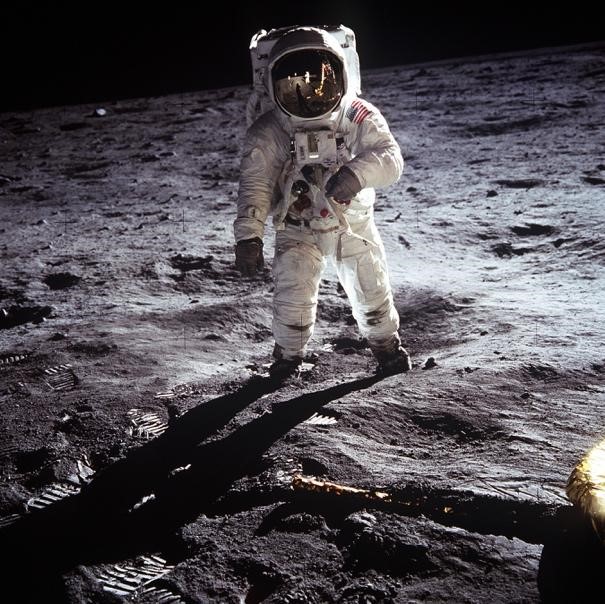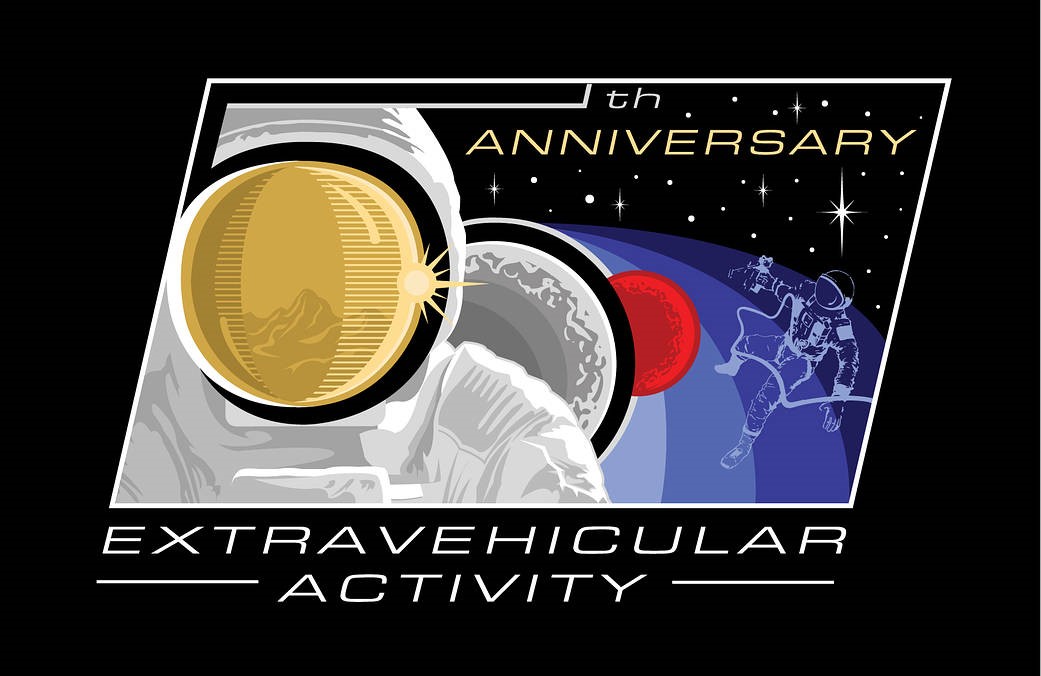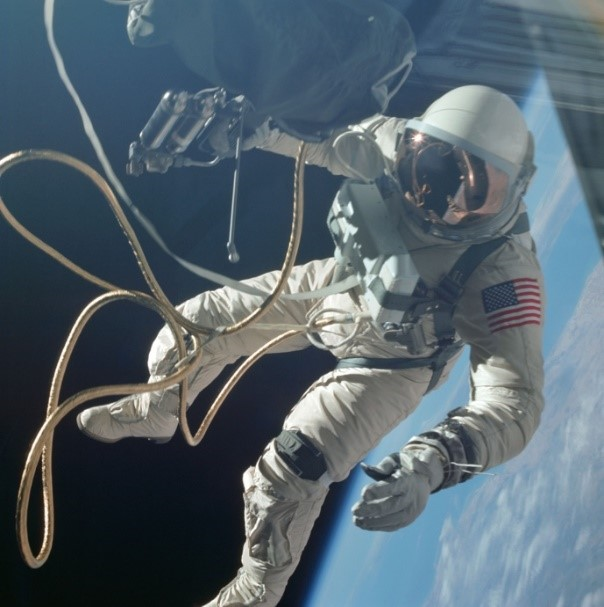Suits Through the Eras: An Origin Story
This is part one of a three-part series. Look for the next installment in early December.
As we approach a new era of space exploration, we look back to our journey over the last 60 years. Throughout our expeditions in space, many technologies have been critical in enabling the human race to experience, explore and navigate beyond Earth. One of the more critical technologies developed during the early era of space exploration was the spacesuit. Spacesuits have played a major role in ensuring the safety of astronauts while providing a means to venture into the vacuum of space and gain spacewalk experience that supports future missions.
Regardless of the mission, the primary purpose of the spacesuit is to protect the crew member from the hazards of space while conducting mission operations. The spacesuit is often referred to as a small personal spacecraft. Today’s spacesuit, the Extravehicular Mobility Unit (EMU), provides a life-sustaining and mobile environment to accomplish various mission tasks, including assembly, repair and maintenance to the International Space Station (ISS).
The history of the spacesuit, its origin and evolution, illustrates the incremental technological breakthroughs and innovations that were required to support each NASA mission. The spacesuits for each major NASA program were designed to meet the unique requirements for each mission. The lessons learned from each program resulted in significant improvements in each new suit design. This series will explore how the suits evolved to support these missions, highlighting where we have been, where we are and where we will go.
Suits through the Eras: The Pioneers
The dawn of space exploration and the inception of NASA created a tremendous opportunity for this country. Technology development and innovations led to great achievements in space, and spacesuits kept the pace with new and better designs for each successive program.
One of a Kind – The Mercury Suit
NASA has been developing spacesuits since the first manned Mercury Program (1958-1963). The requirements of the Mercury Program were many, but the agency hoped to achieve three primary objectives: to orbit a manned spacecraft around the Earth; to investigate man’s ability to function in space; and to recover both man and spacecraft safely. The development of the spacesuit was paramount to the success of the Mercury Program.
The Mercury spacesuit was designed to protect the crew member from emergency decompression. They were worn during six crewed flights, but were not designed or suitable to be used outside the vehicle. The suit requirements necessary to accomplish an activity outside of the space vehicle would be identified during the Mercury mission flights.
The Bridge – The Gemini Suit
The Mercury missions gave us experience and knowledge in the functionality of pressure suits designed to meet the Mercury mission requirements. The ultimate goal became a race to the Moon and, as a result, NASA needed to learn a great deal more about how space would impact human capabilities. The Gemini Program (1965-1966) gave us further insight into what capabilities would be required to reach the Moon and walk on the surface, ranging from ground-support facilities, rocket engines and vehicles to spacesuits. Gemini spacesuits incorporated improvements resulting from experience gained during the Mercury Program and provided a better fit. However, they were designed to test and develop spacewalking capabilities and effectively support mission operations for the Moon.
Since 1965, there have been hundreds of spacewalks conducted, with more than 1,800 of those hours spent in a U.S. spacesuit, completing tasks in the vacuum of space. Whether it be a short walk outside of the craft or a multi-hour excursion, NASA’s suits have kept our brave men and women safe, enabling them to execute important mission tasks. The Gemini suit was the first U.S. suit used to work outside of spacecraft in low-Earth orbit (LEO). During these operations, both stand-up spacewalks (a relatively short period of time during which an astronaut stood in the open hatch) were conducted to demonstrate the ability to perform minor tasks while pressurized in the vacuum of space. This would later progress to full spacewalk activities. However, these suits did not contain their own life-support systems; instead, an astronaut was connected to systems within the spacecraft through an umbilical that provided the astronaut with oxygen during the spacewalk activities. The 10 crewed Gemini flights proved to NASA that it was possible for a suited astronaut to safely venture outside of a spacecraft and perform critical operations that would be necessary for lunar exploration.
Moonwalking 101 – The Apollo Suit
On May 25, 1961, President John F. Kennedy presented us with a new challenge: to land a man on the Moon before the end of the decade. Named after the Greek god of light, music and the sun, the Apollo missions would introduce new demands that drove the need for a suit with greater capabilities. The Apollo suit would be the first suit designed specifically to walk on the surface of the Moon.
Apollo and Artemis are figures in Greek mythology and are children of Zeus. Artemis, Apollo’s twin sister, was the goddess of the Moon. Apollo would set the tone for brief missions on the lunar surface, which will now be expanded upon with the Artemis Lunar Exploration Program missions.
 As we look toward the future of space exploration, partnerships with industry will continue to be a critical part of the success story. The history of suit development demonstrates how important industry has been for all of NASA’s missions. With the help of industry, NASA was able to incorporate many new technologies into the design of the Apollo spacesuit: a Portable Life Support System, improved thermal and cooling systems, and increased mobility, to name a few. The new design enabled astronauts to venture, untethered, from their craft and roam freely to explore their new surroundings on the lunar surface and collect soil samples—capabilities that were not available prior to the Apollo program. The suits were also equipped with gloves, a communications cap (referred to as a “Snoopy cap” due to its resemblance to the Peanuts character), a clear helmet and boots, which could withstand the rocky terrain of the Moon. All of these components allowed astronauts to collect samples and explore their planetary surroundings. The Snoopy cap supported astronauts in communicating with each other and with mission control. Because of this ability, we have some of the most famous quotes in NASA history from the first steps taken by a man on the Moon.
As we look toward the future of space exploration, partnerships with industry will continue to be a critical part of the success story. The history of suit development demonstrates how important industry has been for all of NASA’s missions. With the help of industry, NASA was able to incorporate many new technologies into the design of the Apollo spacesuit: a Portable Life Support System, improved thermal and cooling systems, and increased mobility, to name a few. The new design enabled astronauts to venture, untethered, from their craft and roam freely to explore their new surroundings on the lunar surface and collect soil samples—capabilities that were not available prior to the Apollo program. The suits were also equipped with gloves, a communications cap (referred to as a “Snoopy cap” due to its resemblance to the Peanuts character), a clear helmet and boots, which could withstand the rocky terrain of the Moon. All of these components allowed astronauts to collect samples and explore their planetary surroundings. The Snoopy cap supported astronauts in communicating with each other and with mission control. Because of this ability, we have some of the most famous quotes in NASA history from the first steps taken by a man on the Moon.
“That's one small step for a man, one giant leap for mankind." – Neil Armstrong, Apollo 11, July 20, 1969
Where to Next?
The Apollo spacesuits served their purpose exceptionally well. Lessons learned from the Apollo Program would inform future missions, including Apollo/Soyuz, Skylab, Space Shuttle and ISS. All together, these great programs, and the massive knowledge and experience gained, will propel the new Artemis Program to even greater achievements in space and on planetary surfaces.










